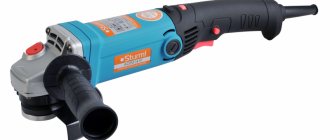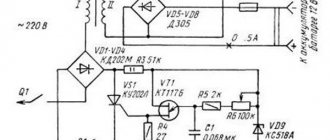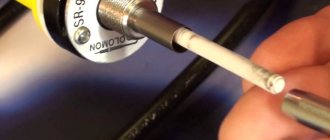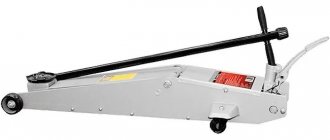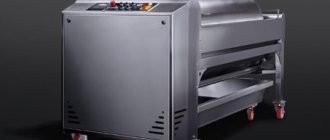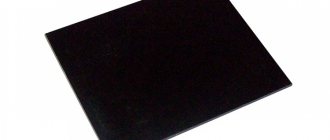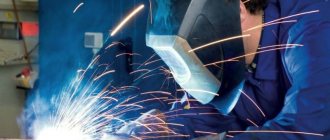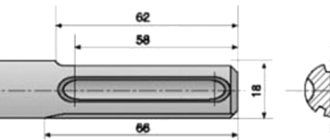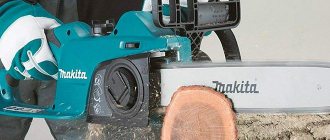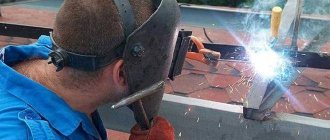A ratchet is a special wrench that is widely used in various fields of activity. It is used to tighten and unscrew nuts during the repair of cars, machine tools and other devices, as well as during construction and assembly work.
According to buyers, the popularity of these product models is explained by their ease of use, wide functionality, and good performance characteristics. In addition, such a tool has a low price and is accessible to everyone.
Structural design
The classic ratchet mechanism is designed to transmit intermittent rotation in one direction. Most often installed for gears. The ratchet mechanism in question is characterized by the following features:
- When manufacturing the workpiece, casting and forging technology is used. This ensures a high degree of reliability.
- The most important part of any device can be called gears. They are represented by wheels made of metal, on the surface of which there are teeth.
- The number of teeth on the surface depends on the intended purpose of the mechanism. As practice shows, the most common version is with 12 teeth for 30-degree rotation.
- For tensioning belts, a design option is often installed that has only 6 teeth.
Another important design element is the dog. It acts as a locking element. The basic properties of the element and its arrangement, certain functions and dimensions largely depend on the specific model and its field of application.
Types of ratchet wrench
Two tool options have been developed for working with fasteners:
- Cap . Outwardly similar to a classic box wrench. Equipped with two working parts, different in size. This is convenient if during work you need to change the key to a larger one without interrupting the process. The ring ratchet has found application in car repair and maintenance. The presence of thin walls of the head of the wrench (for example, Jonnesway W681415) allows the tool to get into hard-to-reach places and transport nodes.
- Socket tool . This is the most popular type of wrench, with a square slot for heads for fasteners.
In addition, ratchets are divided into 4 types, taking into account the size of the nozzles:
- 1⁄4
— the size of the nozzles is 4-14 mm. The tool is used when working with small-sized threaded connections located in hard-to-reach places; - 3⁄8
– head size 8-22 mm. These are not particularly popular, but in vain. Craftsmen recommend confidently buying such tools for work at home and for repairing a passenger car; - 1⁄2
— size 8-22 mm. This is a popular type of key. But you need to work with it carefully, especially when tightening 8-10 mm nuts. If you do not calculate the force, there is a risk of breaking the thread or head of the fastener; - 3⁄4
— size 19-46 mm. This is the largest tool that has become widespread in the manufacture and repair of heavy equipment and large structures.
How does a ratchet mechanism work?
The spread of the ratchet mechanism can be associated with a fairly simple mechanism and operating principle, which ensures a long service life. The ratchet as a part is in many ways reminiscent of a ratchet element, since a corresponding sound occurs during operation. The features of the operating principle include the following points:
- The main part is represented by a hook, lever or drive. The trigger element activates the entire system.
- At the beginning of operation, the pawl is engaged with the wheel, but after activating the mechanism, the main element performs axial rotation. In this case, the latch moves a small distance relative to its original location.
- Traction can be represented by various mechanisms. You can often find a mechanism that provides force adjustment.
- At the moment of axial rotation, the dog slides along the surface. Due to intermittent movement, in some cases it is not possible to use the mechanism in question, as a strong hum occurs.
- The pawl, which is necessary to ensure the functionality of the device, at the moment the axial rotation stops, falls into a special groove, due to which the main part is fixed.
The main cycle can be repeated until the desired result is achieved. An example is lifting the device and some other purposes.
How to use a ratchet wrench
To ensure that the tool lasts as long as possible, follow the safety recommendations:
- It is prohibited to use a lever to create additional force;
- It is prohibited to use auxiliary spacers between the edges of the fastener and the key. This option is possible when the required tool size is not available;
- At the end of the work, wipe the key with a rag;
- It is allowed to work only with working tools. When the ratchet tool is broken due to wear or increased permissible pressure, then such a wrench cannot be used.
Application area
Today, the ratchet as a part is used in the creation of various industrial units with components of engineering structures. At the same time, stable operation of various small elements of tools can be ensured. This point indicates the versatility of using ratchet mechanisms.
From a technical integration point of view, the device outperforms many other designs.
The simplest ratchet part allows you to adjust the position of the head and its fixation.
Very often, manufacturers use a ratchet as an element through which operating parameters are set. An example is fixing the cutting step in a certain range. In addition, installation is carried out during the direct manufacture of machine tools.
Recently, installation has been carried out in cylindrical grinding machines, the device provides radial feed. The mechanism is found in jacks and various winch systems, wind-up cars and other devices.
Rating of the best ratchet sets
| Nomination | place | Name of product | price |
| Rating of the best ratchet sets | 1 | SATA 09510 (150 items) | 18 060 ₽ |
| 2 | JONNESWAY S04H624101S (101 items) | 15 900 ₽ | |
| 3 | BERGER Hof BG108-1214 (108 pcs.) | 7 590 ₽ | |
| 4 | Ombra OMT94S (94 pcs.) | 6 100 ₽ | |
| 5 | Stels 14106 (94 items) | 4 100 ₽ | |
| 6 | DEKO DKMT208 (208 items) | 3 700 ₽ | |
| 7 | Bort BTK-46 (46 items) | 1 960 ₽ |
SATA 09510 (150 items)
Rating: 4.9
SATA key sets are used in such large enterprises as GM, Honda, Samsung. The tool has been certified by American ANSI and German DIN. Experts include a large assortment of tools (150 items), high reliability, strength and durability among the advantages of the SATA 09510 key set. The case, in which all the elements are securely fixed, is made of high-quality polyethylene. To make the heads, the manufacturer used chrome vanadium steel, the end tips are made of S2 steel. To increase the life of the ratchet, an O-ring is installed in the internal mechanism. The set is the winner of our review.
Domestic users admire the strength and reliability of the tool, its versatility, and the thoughtful design of the case.
Advantages
- many items;
- high quality steel;
- convenient case;
- durable ratchet.
Flaws
- not detected.
Types of mechanism
There are a wide variety of friction ratchet mechanisms available on the market. They can be used to implement a wide variety of tasks. Among the features of the classification, we note the following points:
- The profiled surface is often made in the form of a drum or rack.
- The rack-and-pinion version is extremely rare, since the functionality of the device is significantly reduced. Drum friction ratchets are much more common due to their compactness and other properties.
- The base profile is also classified according to a large number of characteristics. The most common are radial, rectangular and flat designs. Radial ones are widely used because they are compact and easy to install.
In most cases, the tooth has a classic shape, which ensures reliable operation.
Features of the operation of bidirectional mechanisms
Many ratchet mechanisms are characterized by the fact that the rotation of the wheel or rack is carried out in only one direction. They also began to produce versions that can rotate in both directions. The key points are the following:
- Rotation is realized left and right. It is this moment that significantly increases the functionality of the device.
- The shape of the teeth is rectangular. Only this ensures uniform rotation of the wheel in both directions.
- A key feature is also how the locking pawl works. At the moment of rotation of the main element, it does not jump, but rises. Due to this, the device becomes more functional, but at the same time less reliable.
The scope of application of such an element has become very widespread today. A variety of materials can be used in its manufacture; in most cases, attention is paid to versions with increased corrosion resistance.
How to make your own ratchet?
In order to significantly save on creating a mechanism, you can make a ratchet with your own hands. The calculation of the ratchet mechanism is carried out depending on the requirements for the system. You can make a ratchet mechanism with your own hands as follows:
- A metal pipe can be used as the main element. It is used to create a shaft that will be used to directly transmit rotation. When choosing a pipe, care should be taken to ensure that the wall thickness is of the required size. Otherwise, it will not be able to withstand the required load.
- A small piece of profile is cut out of a steel sheet, which plays the role of a fixing part. It is recommended to pay attention to alloys with increased strength and wear resistance. In most cases, attention is paid to the design option, which has been hardened to increase the hardness of the surface layer.
- The most problems arise in the case of fitting the main elements to each other. Only in this case will the device work correctly. This is why you have to use precise measuring instruments when working. An example would be a micrometer or caliper.
- The supporting base is made of metal sheets, which are connected to each other using welding technology. Such a base is created depending on the features of the future design.
- The wheel must have teeth on the working surface, which ensure engagement. This element is often connected to the shaft using a key, which is highly reliable. It is quite difficult to make a wheel yourself, since the surface layer must be characterized by high reliability and strength. Most often, the ratchet wheel is removed from other mechanisms or ordered from a specialist who provides the appropriate services.
- The shaft is attached by welding. This type of connection is characterized by increased strength and long service life. It is necessary to pay quite a lot of attention to the quality of the weld, since even minor defects can cause significant problems. The pawl is made using a spring and a running element. The spring can be removed from other mechanisms; the running part is responsible for the displacement of the pawl relative to the tooth.
In general, we can say that the manufacturing process of the structure in question is characterized by a fairly large number of difficulties. Only if you have the required skills and tools can you achieve your goals. The ratchet mechanism drawing can be downloaded on the Internet. When using a properly designed project, you can be sure that all the parts will fit together perfectly.
Advantages of using a ratchet wrench
Using this tool provides a number of advantages, including:
- To tighten or unscrew the fastener, you will need to turn the ratchet with a little force. This allows you to work with large bolted connections (where maximum effort is needed);
- Replacing a wrench with a ratchet increases productivity;
- The tool in question copes better with the task when working with bolted connections in hard-to-reach places. Nothing can be said about the classic analogues. The ratchets cope with the task even when it is not possible to throw the wrench.
Calculation of the ratchet mechanism
When considering how the ratchet mechanism works, attention should be paid to the fact that the most dangerous position is when the top of the pawl rests on the top of the tooth. This phenomenon causes a strong impact, due to which the mechanism wears out quite quickly. Among the features of the calculations carried out, we note the following:
- The strength of the edges is calculated.
- The circumferential force is determined.
When designing, a variety of formulas can be used, and some information is taken from tables.
Calculating the ratchet mechanism creates quite a lot of difficulties, since in some cases the required parameter is selected depending on the operating conditions.
Ratchet wheel calculation
You can calculate the ratchet wheel yourself. Among the features of the procedure, we note the following points:
- In all cases, a coefficient is calculated, which is the ratio of the tooth width to the modulus indicator. Larger values are used for devices that may experience significant shock loads during operation. The width of the dog is 2-4 mm, which compensates for the possibility of inaccuracy in installation work.
- A variety of formulas can be used in calculations, it all depends on what data is known at the beginning of the calculations.
- The bending resistance is calculated when considering the tooth as a beam, since it will be subject to a high load.
You can find just a huge number of different formulas that can be used when carrying out calculations.
Criterias of choice
| Manufacturer | Popular brands include: Fubag, JONNESWAY, JTC AUTO TOOLS, Metabo, Nordberg, Mighty Seven, Licota |
| Max. pressure, atm | What is the pressure of compressed air, it should be slightly less than the pressure of the compressor used. On average it is 6.20 - 6.30 atmospheres. |
| Max. air flow, l/min | This indicator in the characteristics of the tool should be 20-30% lower than the compressor performance. |
| Torque, Nm | The higher this indicator, the fewer problems with locking the nuts under strong resistance. |
| Air fitting diameter, inches | 1/4, 1/8, 3/8, most commonly used is 1/4 inch |
| What connection | Three types of connections are used: threaded, rapid and bayonet. |
| Hose internal diameter, mm | On most ratchets this figure is = 10 mm. There are - 6, 6.5, 8, 9.5 |
| Landing square, inch | 1/2, 1/4, 3/8 on most 1/2 models |
| Max. number of revolutions, rpm | The speed depends on the rotation speed, on average from 150 to 400 rpm. |
| Add. functions | Here you can note the adjustment of the tightening torque and tightening speed. And also the maximum noise level dB, what equipment, the presence of shock. |
Calculation of the ratchet pawl
The installed ratchet pawl acts as an important design element. Among the features of its manufacture, we note the following points:
- When creating the movable pawl of the mechanism, 40X steel is used, which is additionally thermally processed to increase hardness. After heat treatment, the material in question becomes more protected from environmental influences.
- To ensure reliable fixation, a special spring or weight is used.
- When installing the dog, care is taken to ensure that its axis of rotation is positioned so that its contact surface contacts the tooth at an angle of 90 degrees or close to it. This ensures higher reliability of fixation.
The operation of the device in question determines that periodic maintenance does not have to be performed. With prolonged use there is a possibility of rapid wear of the surface. In addition, over time, the spring may lose its basic properties.

